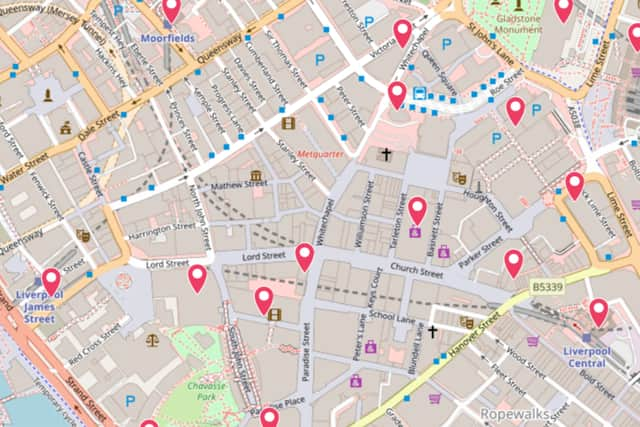Toilet map shows fewer than two dozen accessible toilets in Liverpool - people fear being ‘caught short’
and live on Freeview channel 276
A map of publicly available accessible toilets shows fewer than two dozen in Liverpool, as campaigners call for better facilities for those living with disabilities.
The Great British Public Toilet Map tracks publicly available toilets usings crowd-sourced information from users and data from councils and other organisations.
Advertisement
Hide AdAdvertisement
Hide AdAs the information is largely based on submissions from the public, it may not reflect the full range of facilities available in the area. It only logs free-to-use toilets which the public can use without having to ask – so ‘customers only’ loos are excluded.
Analysis of the figures by QS Supplies, a bathroom supplier, shows there are 66 publicly available toilets in Liverpool – 20 of which are accessible to those with disabilities.
The map also shows that certain areas of Liverpool city centre do not have any publicly available toilets, including the Baltic Triangle, Ropewalks and Chinatown.
Sarah Sleet, chief executive of Crohn's and Colitis UK, said: "We know that nine in ten people with the conditions plan their journeys based on access to toilets.
Advertisement
Hide AdAdvertisement
Hide Ad"This is increasingly challenging and isolating as the number of public toilets declines. The fear of being caught short and unable to access a public toilet when required means many people are confined to their homes.”


"More awareness and understanding will improve the lives of people living with Crohn’s and Colitis to make sure they aren’t hidden at home – they’re out and about, living life to the fullest,” she added.
Across the North West, 296 of 1,074 (27.6%) public toilets are accessible. And across England, the South East has the highest proportion of accessible toilets, with 45.6%, while the West Midlands has the lowest, with just 22.9%.
In February, the Government announced funding for more than 100 new 'Changing Places' toilets – which are designed to be used by people with a range of disabilities – to be built across England.
Advertisement
Hide AdAdvertisement
Hide AdResponding to the news, Shelley Symonds, a campaigner for the Changing Places charity said: “The freedom of being able to visit different places and have days out that we can thoroughly enjoy, without the worry of toilet uncertainty or having to cut our trips shorts, is a wonderful feeling.”
“Not being able to access a suitable toilet dictates our everyday life and prevents us from even accessing our most local community,” she added.
The Great British Public Toilet Map also has a feature allowing users to filter their search to find the most suitable bathroom. Filters include gender-neutral, free, accessible and baby changing.